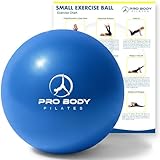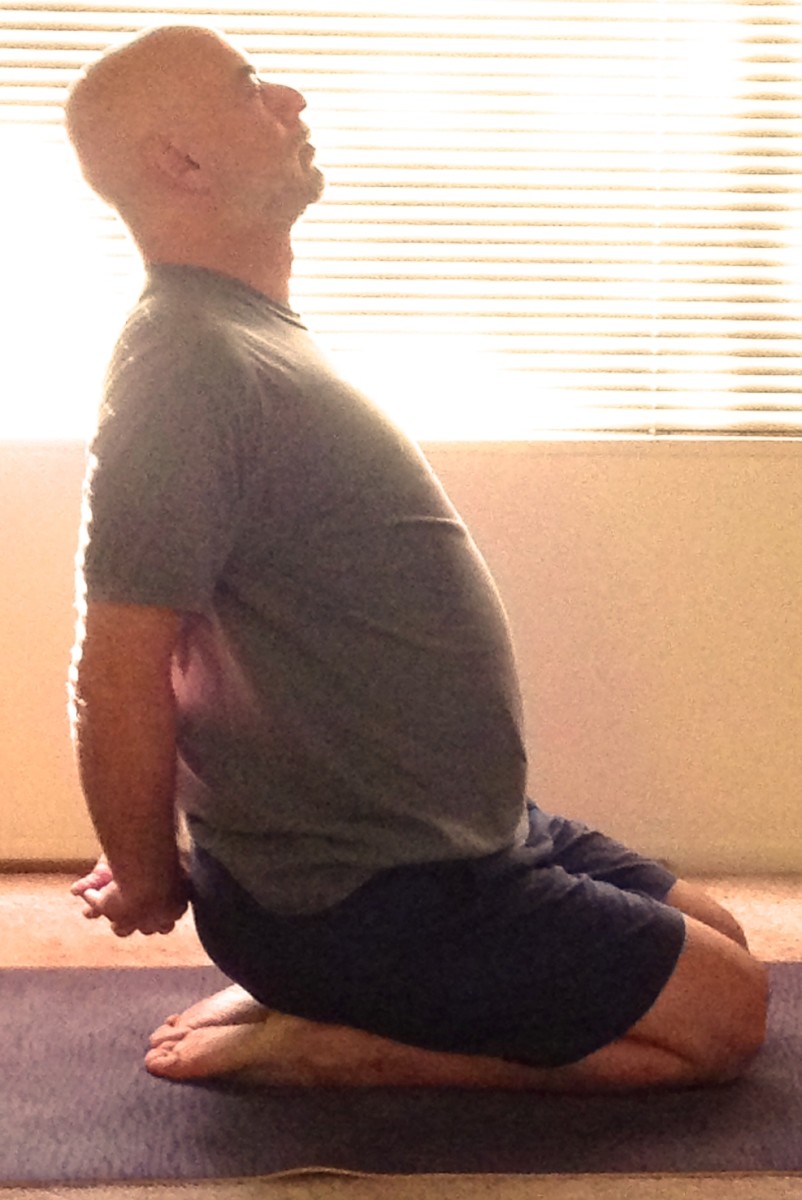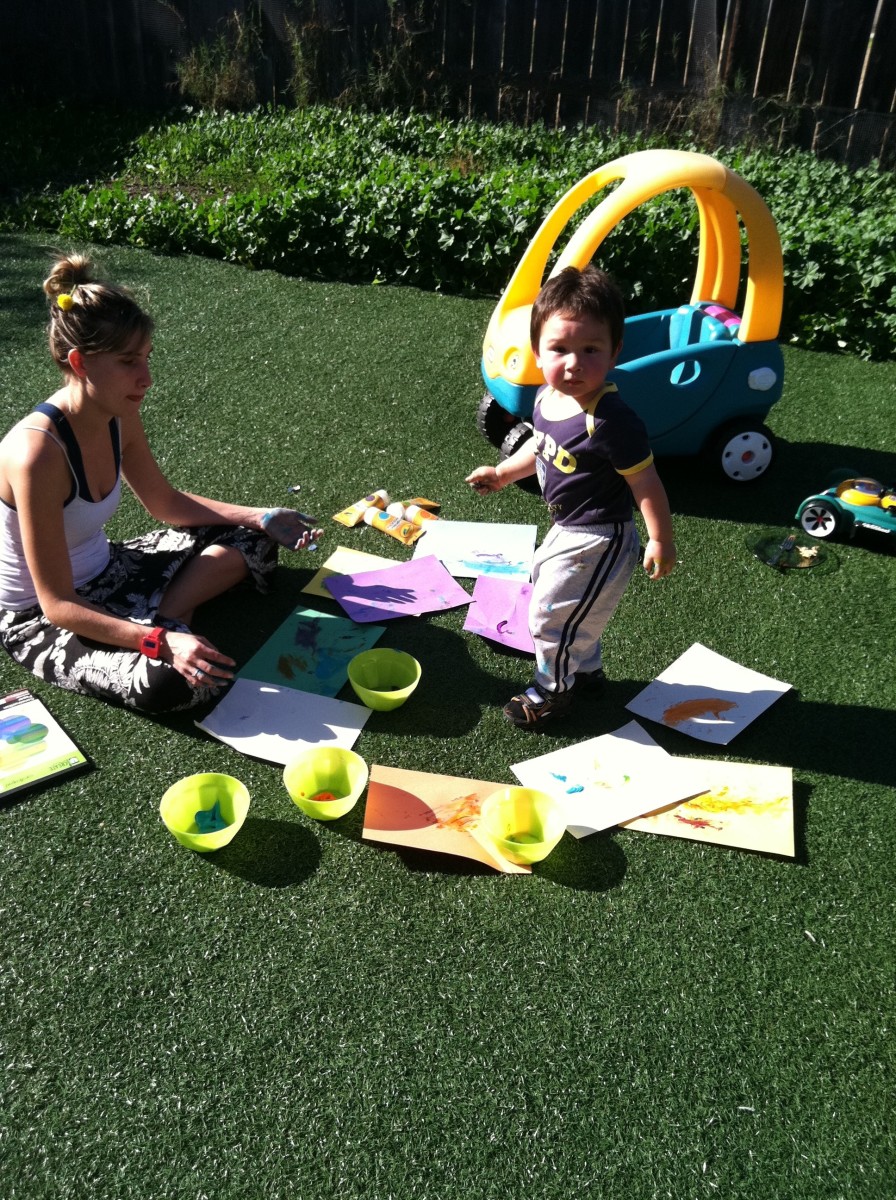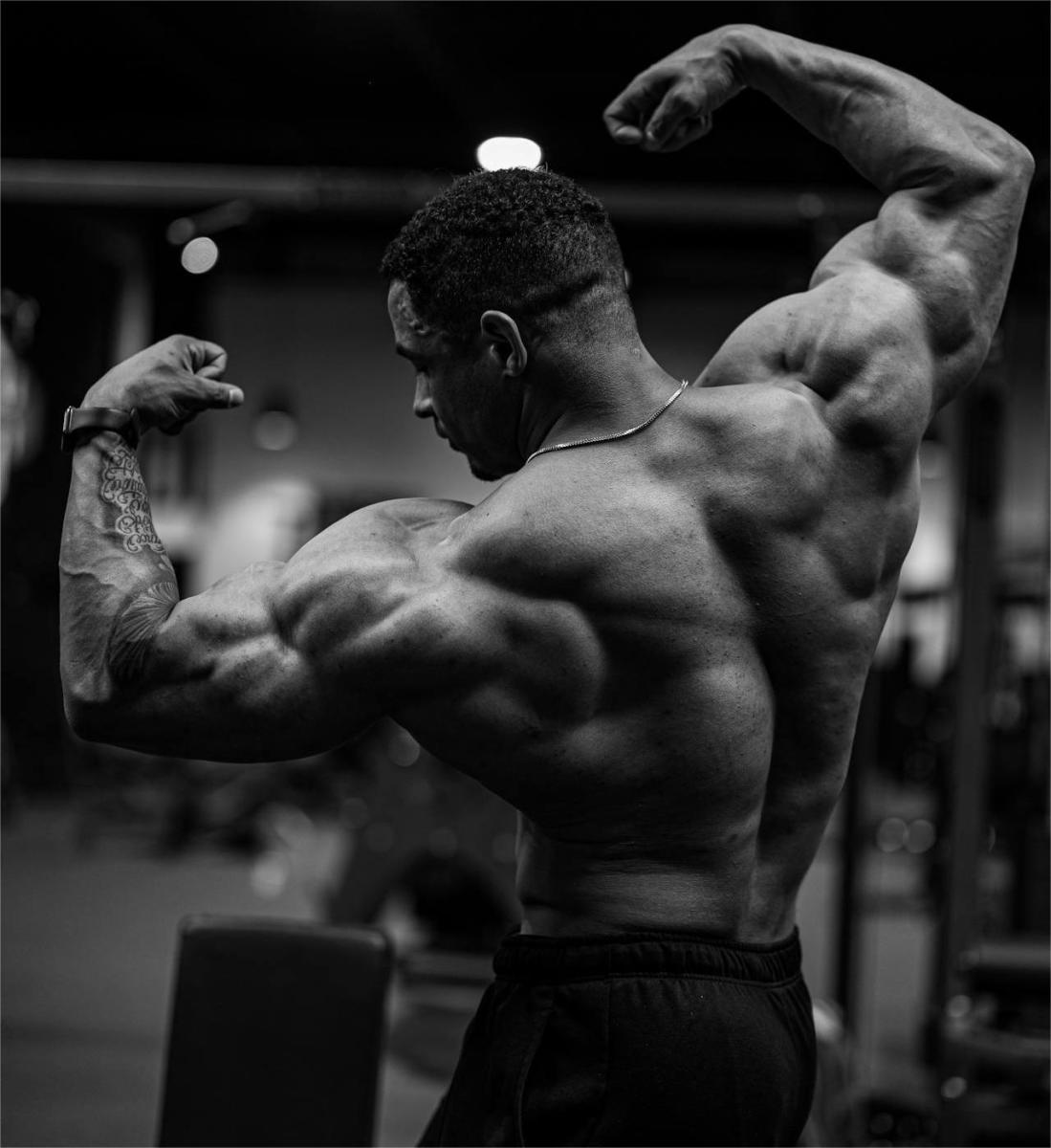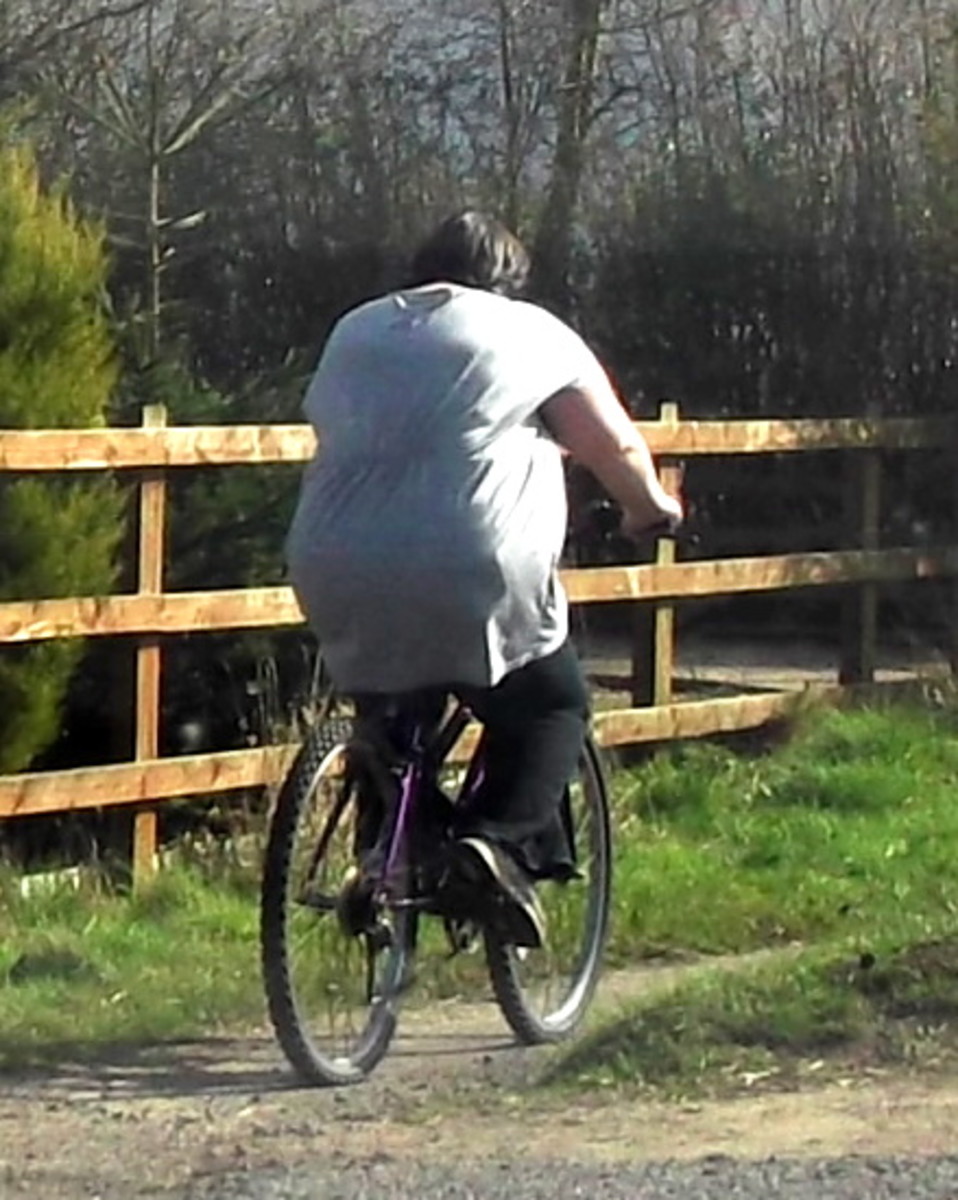Exercise For Life and Life For Exercise
Where did it Begin
While writing the Naturopathic Cook Book, I was asked to include a section on exercise and how to recuperate from post traumatic stress,as well as how to handle depression.
This, at that stage, I did not feel that I was able to include in the book, as it would have required a major restructuring of not only the book but also the target market of the book.
Now, after spending the amount of time on the hubs, I feel that I can now restart on the layouts for the total holistic aproach to the Naturopathic system.
Let us Start With at the Begining
Recuperation
Note:
In order to maintain a healthy balance it is important to breathe correctly, your body whilst it is undergoing, or recovering from, major stress and more importantly depression, you need to assist by setting up a regime of correct breathing to help your body cope.
During periods of stress and depression your body needs extra oxygen to cope with the following.
An accelerated pulse rate, this is caused by
- increased blood pressure
- anxiety breathing - rapid short quick breathes
- panic attack
The only natural way to correct this is a strict regime that includes:
1. Correct breathing - which does the following
- Oxygenates the blood at a steady rate
2. Meditation which relaxes both body and mind, helps you to
- Regain mental focus
3. Exercise the body
- Mobilising your body
4. Rest or sleep
- Rejuvenation
5. Correct diet which will supply your body with
- Nourishment needed to heal itself
I am not trying to fix the cause of the stress, but rather to help you focus on the need to slow down your body and therefore your mind, so that it can best cope with the stress and stain that it is going through.
The first and most important part is to continue to use any medications that you are currently using on and do not try to add to them or change them at present, rather give your body and mind the chance to adjust to the changes and cope better.
Longivity - NEVER STOP BREATHING
I will address the importance of breathing correctly; which is the main stem of your body's existence.
- Your lungs are bellows that suck in clean air and push out the stale air.
This happens on its own accord, and we do this automatically, this is OK under normal conditions as the demands on your body are met.
Under stress, depression and recuperation, we place a strain on our body and we need to not only take in more oxygen in order to circulate enriched oxygen to all parts of the body, it needs to be done at a quicker rate.
To do this we need to use our diaphragm to drive the bellows, not your lungs and chest movement.
This is done by flexing your stomach muscles, the major muscle group is your abs, and you can find this just below your belly button, in slow rhythmic movements.
POSITIONS FOR BREATHING EXCERCISES
WHILE STANDING
- 1. stand in a relaxed position,
- 2. with feet shoulder width apart,
- 3. knees slightly bent
- 4. and your arms hanging loosely at your side
- 5. place your tongue up against the roof of your mouth
WHILE SITTING
- 1. sit squarely with back straight,
- 2. with feet shoulder width apart,
- 3. knees bent at ninety degrees
- 4. and your arms hanging loosely at your side
- 5. place your tongue up against the roof of your mouth.
WHILE LAYING DOWN
1. lay down flat in your back,
- 2. with feet shoulder width apart,
- 3. and your arms hanging loosely at your side
- 4. place your tongue up against the roof of your mouth.
Normal And Deep Breathing
NORMAL BREATHING
Have you ever watched a baby breathing? Do so and you will observe that it uses its stomach to breath. This bellow type action that we were born with, however as we grown older we do not use. In this exaggerated method of breathing we are trying to re-educate our bodies, to breathe naturally and correctly.
I recently underwent abdominal surgery, the day before and the day of the operation, a physiotherapist, came in and educated me on how to breath.
Push your abs out slowly, feel the fresh air being drawn into your lungs through your nose.
Pull your abs slowly back so that it feels as if you are trying to push them against your back, feel the air coming out of your nose.
Your stomach muscle movements must be slow and rhythmical.
Do this slowly for about 10 breathing cycles. You may very well find that you may feel slightly dizzy and light headed - this is normal.
What caused that feeling is the increased oxygenation of your brain.
Now practise this again until you get used the method and your version of a slow rhythm of breathing, you must also be able to do this when sitting or lying down.
Now, that you have mastered the principle of normal breathing you must then master the next step.
DEEP BREATHING
The need for deep breathing is absolutely an essential part in the cycle off rest and meditation.
The breathing method is the same as explained earlier,
Again stand, sit or lay down in the position described earlier.
It is important to count with the same rhythm when breathing in and breathing out. Therefore a count is defined as one second.
To achieve a fairly accurate second space you mentally say:
One hippopotamus
Two hippopotamus
Etc.
To start off
a) Push out stomach muscles, slowly mentally count up to five.
b) Hold breath for a count of three
c) Pull in stomach, slowly mentally count up to ten.
d) Hold breath for again for a count of three
e) Repeat this ten times.
That is the rhythm that you will use for the first seven days
Do this every morning shortly after getting up, and defiantly directly after any stress or physical effort, as well as to try and do this at regular intervals throughout the day, suggest hourly, or at least every other hour, as well as last thing at night before going to bed.
I found this extremely useful when the pain levels increased.
Every seven days this helps to slowly increase the length of time the breathing cycle will take
- increase the count by an additional one on inhale
- and an additional two counts on exhale
So during the next seven days your count on
- breathing in is SIX
- breathing out is TWELVE
- holding count remains THREE
- on the next and every other seventh day you need to increase your count until you are
- breathing in for fifteen
- breathing out for thirty
- and only then on the next to seventh days do you increase the holding of breath between inhale and exhale
- from a count of three to a count of four
- then to a count of five
That is your deep breathing routine and this becomes maximum breathing cycle.
The value of Meditation
MEDITATION
We all need to contemplate at times during our day, so that we can attain the balance and focus.
We unfortunately spend a lot of time chasing deadlines, and are easily distracted by the other demands that our made and forced on us.
USING DEEP BREATHING AS A FOCUS OR TOOL FOR MEDITATION
- Find a quiet spot
- Stand or sit
- Try and clear your mind of what is happening
- Close your eyes
- Focus entirely on your personal psalm or prayer or even a piece of inspirational music
- Your focus or devotional concentration
- This does need to be of at least two minutes to start to obtain the full benefit of the combination of breathing and saying of prayer or intense listening,
- Take five Normal breathing cycles
- This is to start the rhythm and to give you time to focus and compose yourself
- Deep breathe and start your meditation or contemplation going through point 5 in your mind
- Once you have completed that cycle
- Stop your deep breathing at the end of your hold after exhaling
- Take five normal breathes
- Open your eyes, slowly
- Then flex and stretch your body
You will find that at first you may loose your count in your breathing cycle and the reciting or saying your prayers, do not get flustered as you will slowly get this balanced with practise.
Do this as often as you can during the day and only focus for a short period (two to three minutes), but during the evening and morning mediation this should extend and be at least fiveteen to twenty minutes duration which is ideally what you need.
Do this when ever the pressure seems to be too great.
Teach yourself guide to Belly Dancing
EXERCISE
The breathing routines has helped develop and strengthen part of your core muscle structure, namely your abs, you now, that flat lean belly, or your six pack. Also you are now delivering more oxygen to your body, which then also enables the body to turn the fat into muscle.
The one thing that a large number of us all try and put of is exercise.
Types of exercises that need to be undertaken, especially for stress and depression management, should be low impact.
- 1. Walking
- 2. Cycling either static or on the road
- 3. Swimming
- 4. Tai Chi
- 5. Yoga
- 6. Dancing
- I. Walking - every other day
Should be done at a brisk pace, start off with a short distance and build it to a fair distance (5km+ depending on your age and physical status), once comfortable with that distance, then once a week try and set up your personal best time for that distance.
- II. Cycling either static or on the road - every other day
As with walking start off gently and build it up, and set up record for the distance.
NOTE the above two are ideal if you can get someone to do it with, it then builds up an encouragement factor and also a security factor.
- III. Swimming - every other day
As with walking and cycling, again you start off slow and then build up distance then set up records.
Note the above 3 are all relatively low cost
- IV. Dancing - weekly classes practise when you can
Find a partner and enjoy learning Ballroom or Latin American
Or take up Belly Dancing weekly classes and daily practise
This is mainly a females only type thing, it is very good fun and combines breathe control and high energy movements whilst maintaining lowish to medium impact type of exercise, for people with back or knee problems.
- V. Tai Chi - classes are usually weekly but exercise routines done daily
Find a reputable instructor - this is some one that you can feel comfortable with.
- VI. Yoga - weekly classes practise daily
As above
The above exercises will exercise your cardio vascular system which is needed and recommended by doctors to maintain that a healthy life style.
The above would provide you with more than enough maintenance exercise; the only thing is you might still have the need for stronger, harder or longer routine after a particularly stressful day, then do some free exercises with weights for strength training and muscle development. Or do an extra days training in which you attempt to set up a new record.
However it is not always an option for everyone to do the above exercises due to time, age, and other infirmities.
So we need to have some exercise in order to maintain a healthy life style and build up some healthy muscle tone.
So what do we do?
We now need to develop and strengthen the balance of the abs, (remember our breathing has started to fix that), and then the rest of the body.
Also you will need to either exercise in between times, or as a warm-up and stretch routine before a walk or cycle.
The all important Strech
STRETCHING AS AN EXERCISE
This is a daily routine that you can use every day to help keep you in trim and your metabolism fully active. This ideally should be done early morning on a empty stomach then after exercise you wait at least a half an hour.
This exercise routine is like breathing, as it is a continuous, so everything flows from one through to next exercise.
Stand up and mobilise and flex joints and muscles
Start on the Left hand side then move onto the Right hand side of body
Moveable joint flexing
Flex and manually mobilise all your moveable joints
Start with your fingers move up to your wrist, elbow shoulder, neck - all on the left hand side.
Go down to your feet. Do the left and then the right hand side.
Mobilise each toe joint, ankle, knee, and finally the hip joint.
This if you start early on in life will help to prevent stiffening of joints
Lower back and abs
Lay down flat on your back on floor or firm bed, with your knees raised, keep knees and ankles shoulder width apart.
Place your hands flat on the top of your thighs right & left hands on their respective thighs.
Keep your head and neck relaxed and rigid, in a straight line with your hips.
Keep your shoulder square.
This is important as your upper body needs to move as a single unit
Take two normal breaths
On the third breath
Breathe in and then hold for a count of two
Then slowly breathe out, at the same time you must
Push your hands up your thighs till your head and shoulders and shoulder blades are clear of the bed/floor or mat
Hold for a count of two
Then slowly breathe in pulling your hands shoulders back to the start position
Hold for a count of two
Repeat ten times
Oblique Abs Stretch
a) Then take two normal breaths
b) Place your right hand on your left thigh and your left in the air shoulder width away from the right hand
c) On the third breath
d) Breathe in an hold for a count of two
e) Slowly breathe out, at the same time
f) Push your right hand up your left thigh till your head neck and shoulders and shoulder blades clear the floor
g) This will lift your right hand side up higher than the left
h) Hold for a count of two
i) Slowly breathe in pulling your hands shoulders back to the start position
j) Hold for a count of two
k) Repeat ten times
Then take two normal breaths
Reposition your hands so that the left hand is now on your right thigh
Then follow the steps a) through to step k), so that the left hand side is exercised
Then take two normal breaths and continue with the next exercise
Taking that important Rest Break
REST
Your body needs to have a balance between work, exercise and sleep. This is a period of rest this is the time you need to totally relax and empty your mind of all thoughts for a few minutes, it is ideal to do this at least every other hour.
At the office -
Sit with your back straight and firm against backrest of your office chair, shoulders in line with your hips knees slightly apart and feet flat on the ground in line with your knees, your arms resting on your lap.
Take five normal breathes so as to establish your breathing rhythm.
Then relax your head so that it rests on your chest
Breathe in lifting your head at the same time
Breathe out letting your head return to the start position at the same time
While you are doing this try and clear your mind of all sounds around you and try not to think of anything
Do this for ten to twenty breath cycles, but the number of breathes actually does not matter, what does matter is that you take time out after each and any physical that you do, so you let your mind come to a state of rest.
Example of when to rest:
- after doing your morning exercise
- your daily bath or shower
- getting dressed
- driving to work
- after completing a stressed out conversation or task or query
- etc
This will help you take charge of each part of each day.




